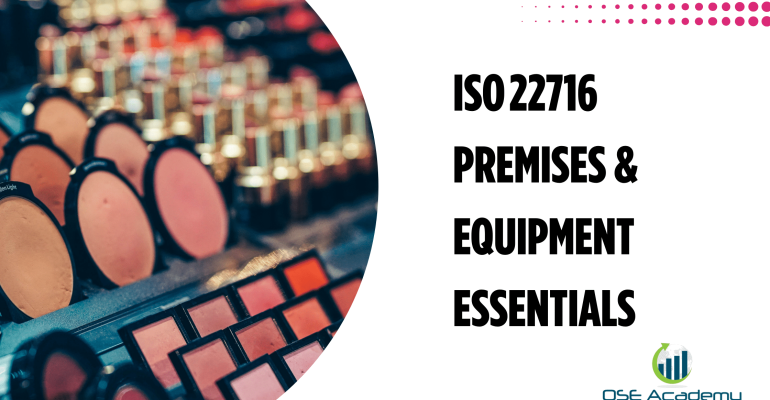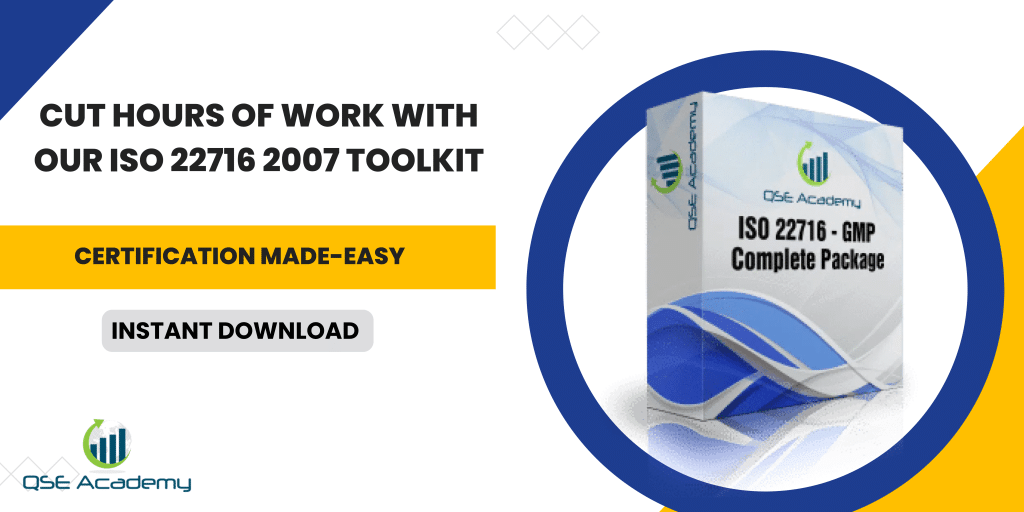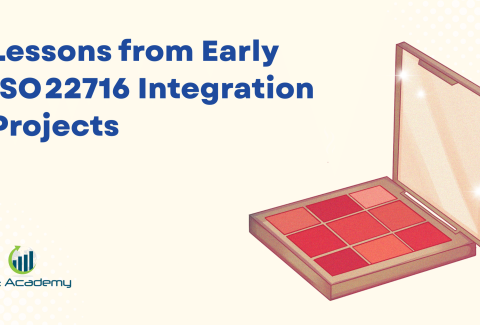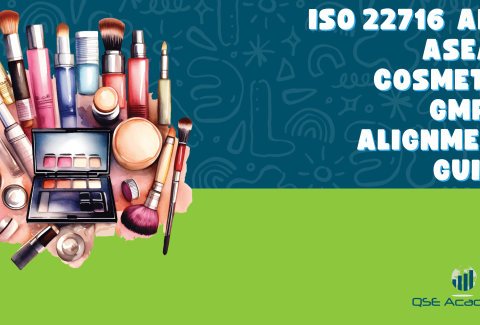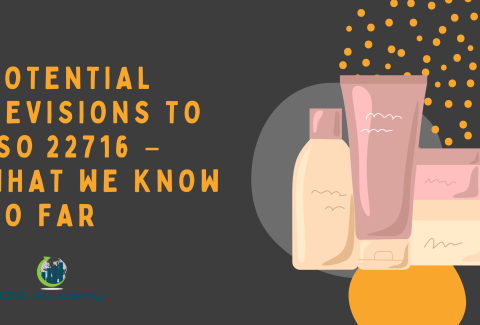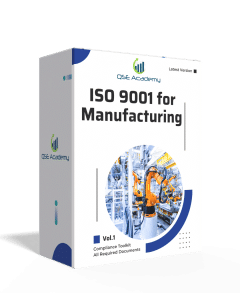ISO 22716 Premises & Equipment Essentials
Last Updated on October 24, 2025 by Hafsa J.
Why Premises & Equipment Matter in ISO 22716
When people think about cosmetic GMP, they often picture procedures and paperwork—but the real foundation starts with your premises and equipment. I’ve walked through many cosmetic facilities where great teams struggled simply because their layout or maintenance routines worked against them.
ISO 22716 dedicates specific clauses to ensure your physical environment supports safe, consistent manufacturing. It’s not about building something expensive—it’s about designing flow, hygiene, and control into every corner of your workspace.
In this guide, you’ll learn:
-
How ISO 22716 defines compliant premises and equipment.
-
Practical ways to organize production areas for efficiency and safety.
-
Common facility and maintenance mistakes that trigger nonconformities.
-
Real, experience-based tips to make your setup both audit-ready and user-friendly.
Think of this as your roadmap to a facility that works for you, not against you—because good GMP design doesn’t just meet requirements, it prevents problems before they start.
Understanding ISO 22716 Premises Requirements (Clause 4.1–4.4)
ISO 22716 starts with one big idea: your facility should make it easy to do things right and hard to do things wrong. The way your building is designed directly affects how clean, safe, and traceable your production process can be.
Here’s what the standard expects:
-
Logical layout. Separate raw-material receipt, production, packaging, and storage areas. The goal is smooth flow—from clean to less-clean zones—without backtracking.
-
Defined access. Only authorized staff should enter GMP areas. Simple signs and door locks prevent accidental contamination.
-
Surface suitability. Walls, floors, and ceilings must be smooth, easy to clean, and resistant to the chemicals you use.
-
Utilities under control. Lighting, ventilation, and drainage should support cleanliness, not compromise it.
In my experience, most nonconformities around premises aren’t about size—they’re about flow. I once audited a small cosmetic lab that passed easily because materials moved in one direction, with color-coded zones and clear storage boundaries. It was efficient, low-cost, and fully compliant.
Pro Tip:
Sketch a quick process-flow diagram of your facility. If arrows cross, you’ve found a potential contamination risk. Adjust layout or procedures accordingly.
Common Pitfall:
Trying to squeeze incompatible operations—like weighing fragrances and filling bottles—into the same space. Even with good intentions, you’ll create quality risks that ISO 22716 won’t forgive.
A well-planned facility doesn’t just tick boxes—it sets the tone for every GMP habit that follows.
Facility Hygiene & Cleaning Procedures
Even the best-designed facility won’t stay compliant without consistent cleaning. ISO 22716 treats hygiene as a daily discipline, not an occasional task. Clean premises protect your products from contamination, safeguard your reputation, and make audits smoother.
What the standard expects is simple but strict:
-
Written cleaning procedures for every area — production, storage, labs, and even changing rooms.
-
Defined responsibilities so everyone knows who cleans what and how often.
-
Documented records of cleaning performed, approved, and verified.
Here’s what I’ve noticed in well-run cosmetic facilities: they use cleaning schedules that match risk levels. For example, filling rooms get cleaned after every batch, while corridors might follow a weekly plan. They also choose detergents and disinfectants that won’t react with their products.
Pro Tip:
Create a visual cleaning map — color-code zones and tools (blue for production, green for warehouse, yellow for non-GMP areas). It prevents cross-contamination and helps new staff adapt faster.
Real Example:
One small cosmetic manufacturer I worked with reduced audit findings by half just by introducing color-coded mops and a cleaning verification checklist. The system was simple, but it showed auditors clear evidence of control.
Common Pitfall:
Cleaning gets rushed when production deadlines pile up. Missing a few entries in the cleaning log may not seem like a big deal, but auditors view it as a sign of poor control. Always record the who, when, and how.
Clean facilities don’t just look good — they prove that your GMP culture is alive and consistent.
ISO 22716 Equipment Requirements – Selection & Design
Equipment is the backbone of your cosmetic production. Under ISO 22716, it’s not enough for machines to work — they need to support clean, consistent, and contamination-free operations.
The standard emphasizes equipment that’s:
-
Made from suitable materials (non-reactive, non-corrosive, and easy to clean).
-
Accessible for inspection and maintenance.
-
Designed to prevent product mix-ups and residue build-up.
Here’s what I’ve seen go wrong: companies buy industrial-grade machines that perform well technically but are impossible to clean properly. Corners, gaskets, or valves trap residues, leading to microbial growth or cross-contamination.
Pro Tip:
Before purchasing or commissioning any new equipment, run a short cleanability assessment. Ask your team: “Can this be easily dismantled, cleaned, and reassembled without tools or shortcuts?” If the answer is no, rethink the design or layout.
Common Pitfall:
Using one piece of equipment for multiple product types—say, a filling machine used for both creams and oils—without a validated cleaning process between batches. That’s a classic nonconformity.
Real Example:
A manufacturer I consulted once swapped a complex filling nozzle for a simpler quick-release model. Cleaning time dropped by 40%, and they stopped getting residues on batch-start checks. Sometimes compliance is about smarter design, not more equipment.
The goal is straightforward: your equipment should make good manufacturing easier. When design supports GMP, operators spend less time fighting the process—and more time ensuring quality.
Equipment Maintenance, Calibration & Documentation
Even the most reliable machine will eventually drift out of tolerance if it isn’t maintained. ISO 22716 expects you to treat maintenance and calibration as proof of control, not afterthoughts.
Every piece of equipment—from balances and mixers to thermometers—needs a defined maintenance and calibration plan. That plan should show when tasks happen, who performs them, and how results are verified.
Here’s what that looks like in practice:
-
Maintenance schedule: list each machine, frequency, and responsible technician.
-
Calibration records: include reference standards, results, and any corrective actions.
-
Tagging system: mark equipment as in use, under maintenance, or out of service so no one uses it by mistake.
In my experience, the best facilities integrate maintenance with production planning. They schedule preventive checks between batches to avoid downtime. It’s simple coordination, but it keeps quality and efficiency aligned.
Pro Tip:
Keep a maintenance logbook near each major piece of equipment. Operators can note issues immediately instead of relying on memory or email threads. Small details like that prevent small problems from turning into big ones.
Common Pitfall:
Performing calibration but failing to record “as-found” conditions. If an instrument was out of spec, you must assess whether it affected product quality. Missing that link is a classic audit trigger.
One facility I supported added a red-amber-green dashboard to their maintenance tracker—green for current, amber for due soon, red for overdue. Their next audit report had zero findings under Clause 4.5.
Well-maintained, well-documented equipment isn’t just compliant—it’s predictable. And predictability is what GMP is all about.
Storage & Environmental Control
Once your products and raw materials are made, the next challenge is keeping them safe and stable. ISO 22716 doesn’t just focus on production—it also looks closely at how you store and protect materials before and after use.
The principle is simple: your storage areas must maintain conditions that preserve quality and prevent contamination. That includes temperature, humidity, light exposure, and segregation of incompatible materials.
Here’s what works in real facilities:
-
Separate zones for raw materials, packaging, quarantined items, and finished goods.
-
Labeled storage areas with clear status tags like “Released,” “Under Test,” or “Rejected.”
-
Environmental controls—such as air conditioning, dehumidifiers, or light protection—for temperature-sensitive products.
-
Regular monitoring using calibrated sensors and logbooks to record readings.
Pro Tip:
Use data loggers with alerts that notify your team when temperature or humidity drifts out of range. It’s a simple investment that prevents expensive product losses.
Common Pitfall:
Mixing chemicals or waste containers in the same area as raw materials. Even if they’re sealed, auditors see that as a red flag for cross-contamination and poor segregation.
One cosmetic warehouse I visited set up color-coded storage racks—blue for packaging, green for raw materials, yellow for finished goods. That small visual cue helped staff organize faster and kept their layout compliant.
Good storage is more than tidiness—it’s traceability and control. When every product is stored under the right conditions and properly labeled, you protect both your customers and your certification.
Pest Control & Waste Management
Clean facilities mean nothing if pests or waste are left unchecked. ISO 22716 expects cosmetic manufacturers to have robust systems for keeping pests out and managing waste safely—because both can compromise product quality faster than you think.
A compliant facility should have clear, preventive measures in place:
-
Pest control program: regular inspections by trained personnel or external contractors.
-
Traps and monitoring devices: placed strategically and documented, not just “as needed.”
-
Waste management plan: procedures for collecting, segregating, and disposing of waste in a hygienic, traceable way.
-
Defined zones: keep waste and cleaning equipment away from production and storage areas.
In my experience, this is one of those areas where simplicity beats sophistication. You don’t need high-tech sensors—just a consistent routine, good housekeeping, and thorough records.
Pro Tip:
Record pest inspections even when you find nothing. Auditors appreciate continuous proof of monitoring, not just action after a problem.
Common Pitfall:
Leaving open bins in production areas or forgetting to clean them regularly. It’s a small detail that can lead to contamination—and it’s one of the quickest ways to lose credibility during an audit.
One cosmetics facility I worked with adopted a “clean-as-you-go” policy and set a 24-hour waste removal rule. Their environment improved noticeably, and pest control visits went from monthly issues to none for over a year.
Good waste and pest management aren’t just about compliance—they signal discipline, respect for the workspace, and care for the product.
FAQs – ISO 22716 Premises & Equipment
Q1: What’s the most common nonconformity with premises and equipment?
In my experience, it’s usually poor layout or missing cleaning documentation. Even a spotless facility can fail an audit if the workflow allows cross-contamination or if cleaning logs aren’t updated. ISO 22716 is as much about proof as performance.
Q2: How often should cosmetic manufacturing equipment be calibrated?
Follow a risk-based schedule or the manufacturer’s recommendation. For critical equipment—balances, thermometers, filling lines—calibration should be annual at minimum. Keep both the results and the “as-found” data to demonstrate traceability.
Q3: Do small cosmetic businesses need dedicated rooms for every activity?
Not necessarily. ISO 22716 doesn’t demand huge facilities—it demands segregation and control. You can use physical barriers, clear signage, or procedural separation to keep incompatible activities apart. Smart zoning often solves space issues without renovation.
Key Takeaways and Next Steps
Your premises and equipment form the physical backbone of your GMP system. If they’re well-designed, well-maintained, and well-documented, everything else—from hygiene to training—flows naturally.
Here’s what matters most:
-
Design your layout around product flow, not convenience.
-
Keep cleaning and maintenance routines documented and consistent.
-
Treat equipment calibration as proof of control, not just a technical task.
-
Use visual cues and simple systems—because the best setups are the ones people actually follow.
In my experience, facilities that focus on control instead of complexity always perform better during audits. They understand that compliance is built into everyday habits, not rushed the week before inspection.
If you’re ready to strengthen your GMP foundation, QSE Academy’s ISO 22716 Documentation Toolkit can help. It includes templates for cleaning schedules, maintenance logs, equipment calibration forms, and facility layout checklists—everything you need to keep your operations audit-ready and efficient.
Start building a compliant facility today — explore how QSE Academy can guide you toward ISO 22716 certification with clarity and confidence.
Whether it’s ISO 9001, ISO 22000, or the cosmetics-focused ISO 22716, I’ve spent my career I’m not here to call myself an expert—I prefer “enthusiast” because I truly love what I do. When I’m not writing about standards, you’ll probably find me playing Piano 🎹, connecting with people, or diving into my next big project💫. I’m an engineer specialized in the food and agricultural industry
make ISO standards less intimidating and more approachable for everyone.
turning complex jargon into clear, actionable steps that businesses can actually use.
There’s something incredibly rewarding about helping people navigate food safety and quality management systems
in a way that feels simple, practical, and even enjoyable.
I have a Master’s in QHSE management and over 12 years of experience as a Quality Manager
I’ve helped more than 15 companies implement ISO 9001, ISO 22000, ISO 22716, GMP, and other standards
My clients include food producers, cosmetics manufacturers, laboratories, and service companies
I believe quality systems should be simple, useful, and efficient.

